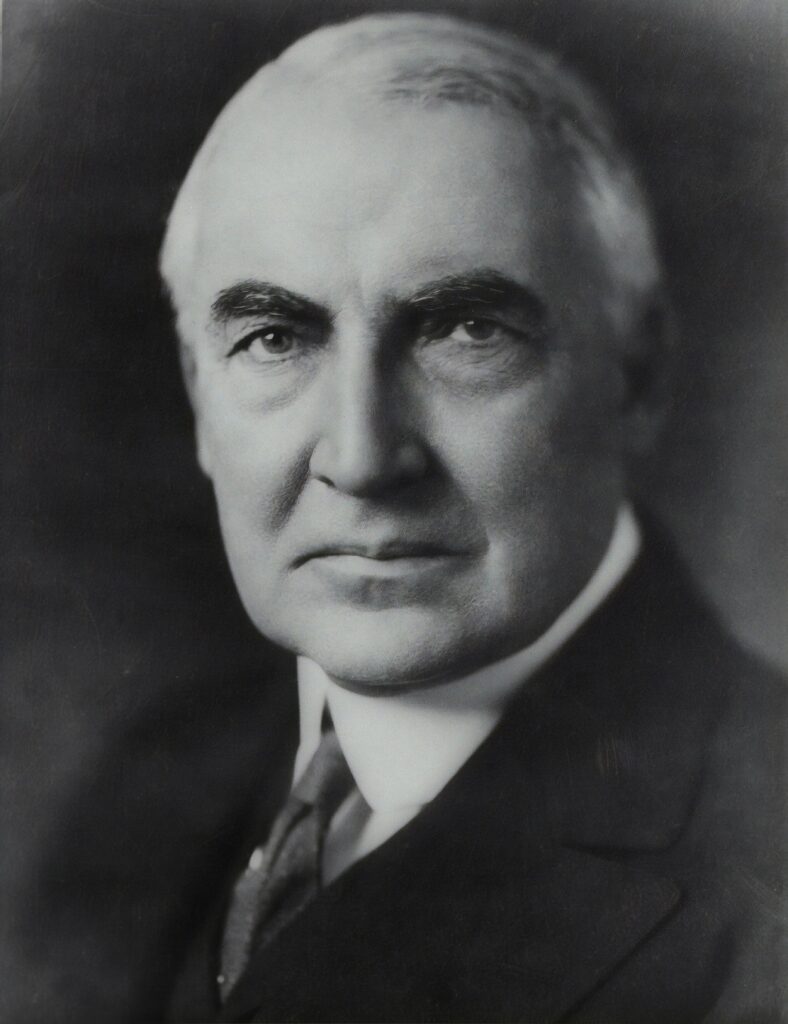In today’s article, the focus is on the correlation between the age-old question, “What Would Jesus Do?” and the concept of servant leadership. Looking at the timeless teachings of Jesus Christ and how they can be applied to modern leadership practices, this piece explores the idea of selflessness, empathy, and humility as key components of effective leadership. By examining the principles of servant leadership through the lens of Jesus’ teachings, readers will gain insights into how this approach can bring about positive and lasting change in various aspects of life.

Understanding the Concept of ‘What Would Jesus Do?’
The concept of ‘What Would Jesus Do?’ (WWJD) has its historical origin in the Christian faith. It gained popularity in the late 19th century through the writings of Charles Sheldon, a Protestant minister. Sheldon’s book titled ‘In His Steps: What Would Jesus Do?’ introduced the concept to a wider audience, sparking interest and discussion about how one’s actions should reflect the teachings of Jesus.
Historical origin of the concept
The concept of WWJD can be traced back to the teachings of Jesus as recorded in the Bible. Jesus emphasized the importance of love, compassion, and selflessness in one’s interactions and decisions. The phrase itself, “What Would Jesus Do?” is derived from the belief that by emulating Jesus’ character and actions, one can live a life that is pleasing to God and beneficial to others.
Liberal interpretation of the concept
In a liberal interpretation of WWJD, the focus is on promoting social justice and equality. This interpretation emphasizes Jesus’ teachings about caring for the marginalized and standing up against injustice. Those who adhere to this interpretation strive to model their actions after Jesus’ example of inclusivity and compassion.
Conservative interpretation of the concept
On the other hand, a conservative interpretation of WWJD may emphasize personal morality and obedience to biblical principles. This interpretation focuses on living a life of virtue and adhering to traditional moral values as taught by Jesus. Adherents of this interpretation would seek to make decisions based on what they believe Jesus would do in a particular situation, as guided by their understanding of scripture.
WWJD in popular culture
Over the years, the WWJD concept has transcended its religious origins and entered popular culture. It has been embraced by various groups and individuals, both within and outside of the Christian community. The phrase has been applied to a wide range of situations, from personal ethical dilemmas to social and political issues. It has become a shorthand way of encouraging individuals to consider the moral and ethical implications of their actions.
Jesus as a Character in the Bible
To thoroughly understand the concept of WWJD, it is crucial to gain insight into the life and teachings of Jesus as depicted in the Bible.
Jesus’ life from a historical perspective
Historically, Jesus of Nazareth was a Jewish religious leader who lived in the 1st century AD. His birth, life, and teachings are chronicled in the New Testament of the Bible. While historical records about Jesus are limited, biblical accounts provide valuable insights into his character, actions, and impact on society.
The teachings and parables of Jesus
Central to Jesus’ ministry were his teachings and parables, which conveyed profound moral and spiritual lessons. He urged his followers to love their neighbors, practice forgiveness, and strive for spiritual growth. His parables, such as the Good Samaritan and the Prodigal Son, illustrated the importance of compassion, mercy, and redemption.
Jesus’ interaction with his disciples and followers
Jesus’ relationship with his disciples and followers exemplified servant leadership. He humbly served those around him, both in word and deed. He taught by example, demonstrating the importance of humility, selflessness, and empowering others.
Jesus’ Crucifixion and Resurrection
The climax of Jesus’ life was his crucifixion and subsequent resurrection. According to Christian belief, Jesus willingly sacrificed himself on the cross to atone for humanity’s sins. His resurrection three days later is seen as a symbol of hope, redemption, and victory over death.

Jesus as a Servant Leader
A central aspect of Jesus’ life was his embodiment of servant leadership. Servant leadership is a leadership style that prioritizes the well-being and development of others before self-interest. Jesus’ life serves as a profound example of this leadership approach.
Scriptural examples of Jesus’ servant leadership
Throughout the New Testament, there are numerous instances where Jesus demonstrated servant leadership. He washed the feet of his disciples, a task typically performed by servants, to teach them the importance of humility and service. Jesus’ willingness to lay down his life for humanity is the ultimate act of selfless service.
The washing of the disciples’ feet as a metaphor for service
The washing of the disciples’ feet serves as a powerful metaphor for servant leadership. By performing this act, Jesus emphasized the need for leaders to humble themselves and serve those under their care. It challenges leaders to set aside their own egos and prioritize the needs of others.
Jesus’ teachings on leadership and service
Jesus’ teachings emphasized the importance of servant leadership. He instructed his disciples to lead by example, to be servants of all. He taught that true greatness comes from serving others and that leaders should be willing to sacrifice for the betterment of those they lead.
The Concept of Servant Leadership
Servant leadership is a leadership philosophy that emphasizes the leader’s responsibility to serve and support their followers. It prioritizes the well-being and growth of individuals and aims to create a positive and empowering work environment.
Definition and history of servant leadership
The concept of servant leadership was popularized by Robert K. Greenleaf in the 1970s. Greenleaf argued that true leaders should prioritize the needs of their followers and work towards their development. Servant leadership draws inspiration from Jesus’ example and encourages leaders to embrace humility, empathy, and service.
Key principles of servant leadership
Servant leadership is characterized by several key principles. These include active listening, empathy, healing, awareness, persuasion, conceptualization, foresight, stewardship, commitment to the growth of people, and building community. These principles provide a framework for leaders to prioritize the well-being of their followers and to create a culture of trust and collaboration.
The role of empathy and humility in servant leadership
Empathy and humility are central to servant leadership. Leaders who practice empathy understand the needs and concerns of their followers, allowing them to provide support and guidance. Humility enables leaders to genuinely listen to others, admitting their own limitations, and valuing the contributions of their team members.

Comparing Servant Leadership with Other Leadership Styles
While servant leadership promotes a people-centric approach, other leadership styles may prioritize different aspects of leadership. It is valuable to compare and contrast servant leadership with other commonly recognized leadership styles.
Comparing and contrasting servant leadership with autocratic leadership
Autocratic leadership is characterized by a leader who makes decisions without consulting others. This leadership style centralized authority and often lacks transparency. In contrast, servant leadership emphasizes collaboration, empowerment, and the involvement of followers in decision-making processes.
Servant leadership vs transformational leadership
Transformational leadership focuses on inspiring and motivating followers to achieve their full potential. While there are similarities between servant leadership and transformational leadership, servant leadership places a stronger emphasis on the personal well-being and development of followers. Both approaches, however, seek to bring about positive change and growth.
The role of ethics in different leadership styles
Ethics play a critical role in all leadership styles, but their implications may differ. Servant leadership places a strong emphasis on ethical conduct and moral values, as exemplified by Jesus’ teachings. Other leadership styles may prioritize different ethical considerations, such as achieving organizational goals or maintaining power dynamics.
Case Studies of Servant Leadership
Servant leadership is not merely a theoretical concept; it has been implemented and practiced successfully in various sectors.
Examples of servant leadership in the corporate world
Several well-known CEOs and companies have embraced servant leadership principles. For example, Starbucks, under the leadership of Howard Schultz, focused on creating a positive work environment, offering employee benefits, and supporting local communities. This approach contributed to the company’s success and positive public image.
Instances of servant leadership in politics
Politicians have also applied servant leadership principles in their approach to governance. Nelson Mandela, for example, exemplified servant leadership through his commitment to reconciliation, forgiveness, and equality in post-apartheid South Africa. His selfless dedication to the well-being of his people made him an influential figure both nationally and internationally.
Servant leadership in the non-profit sector
Servant leadership finds a natural fit within the non-profit sector, as the focus is often on serving the needs of others. Many non-profit organizations operate on the principles of empowerment, collaboration, and making a positive impact in society. Leaders in these organizations prioritize the well-being of their teams and the communities they serve.
Critics of Servant Leadership
Despite its merits, servant leadership is not without its critics. Understanding the limitations and potential challenges of servant leadership is essential for a well-rounded discussion.
Limitations of servant leadership
Critics argue that servant leadership may be ineffective in environments that prioritize efficiency, productivity, and results above all else. In highly competitive industries or during times of crises, leaders may need to adopt a more directive leadership style to navigate complex challenges.
Instances where servant leadership may not be the best approach
Servant leadership may not be suitable in situations where quick decision-making and strong direction are required. In certain industries and job roles, a more authoritative leadership style might be necessary to maintain efficiency and ensure the achievement of organizational goals.
Addressing criticisms about servant leadership
Critics’ concerns about servant leadership can be addressed by recognizing that no single leadership style is universally applicable. For servant leadership to be effective, leaders must also possess qualities such as strategic thinking, assertiveness, and the ability to adapt their approach to different contexts. A balanced leadership approach that incorporates aspects of servant leadership along with other styles may be the ideal solution in many situations.
The Role of ‘What Would Jesus Do?’ in Servant Leadership
The WWJD concept can serve as a moral and ethical guide for leaders practicing servant leadership.
Interpreting and applying WWJD in leadership decisions
When faced with difficult decisions, leaders can ask themselves what Jesus would do in a similar situation. Reflecting on Jesus’ teachings and life can provide insights into how to approach challenges with empathy, humility, and a focus on the well-being of others. WWJD serves as a guiding principle to align one’s actions with the values of servant leadership.
Use of WWJD as a moral and ethical guide for servant leaders
WWJD can serve as a moral compass, helping leaders make ethical decisions aligned with their values. By asking themselves what Jesus would do, leaders are prompted to consider the impact of their choices on others and make decisions that prioritize the greater good.
Potential risks and benefits of using WWJD as a guiding principle in leadership
While WWJD can be a valuable guiding principle, it is important to recognize its limitations. Different interpretations of what Jesus would do in specific situations may exist, leading to potential disagreements. Additionally, leaders must exercise discernment, ensuring that applying WWJD is appropriate in each unique context. When used thoughtfully, WWJD can enhance servant leadership by encouraging leaders to consider the deeper moral and ethical implications of their actions.
The Impact of Christian Values on Leadership
The principles and teachings of Jesus have had a profound influence on leadership theories and practices, even beyond religious contexts.
The influence of Christianity on leadership principles
Christianity has played a significant role in shaping leadership principles, ethics, and values. The teachings of Jesus, marked by love, compassion, fairness, and service, have permeated both religious and secular leadership philosophies. Christian values have influenced leaders to prioritize the well-being of others and to lead with integrity and humility.
Balancing the teachings of Jesus with the demands of modern leadership
Leaders today face complex challenges and pressures that can make it difficult to fully implement the teachings of Jesus. Balancing the demands of organizational goals, stakeholder expectations, and personal beliefs can be a delicate task. However, leaders can strive to integrate Christian values into their decision-making processes, seeking to align their actions with the principles of integrity, compassion, and service.
The role of faith in decision-making processes
For leaders who have a Christian faith, personal beliefs can play a significant role in their decision-making processes. Faith can inform and guide a leader’s values, ethics, and sense of purpose. It can provide a moral compass that shapes their interactions with others and the choices they make in their leadership roles.
Conclusion: Infusing Servant Leadership with WWJD
Combining the principles of servant leadership with the guiding question of WWJD can lead to more compassionate and effective leadership.
The power of combining servant leadership and WWJD principles
Servant leadership and the WWJD concept complement each other, emphasizing the importance of empathy, humility, and service. By combining these principles, leaders can create a work environment that fosters growth, collaboration, and the well-being of their teams.
Applying these concepts in daily professional life
Leaders can apply the concepts of servant leadership and WWJD in their daily professional lives by consciously striving to serve their followers, make ethical decisions, and lead by example. They can ask themselves what Jesus would do in various situations, seeking guidance from his teachings and life when faced with moral dilemmas.
Future research on the intersection of WWJD and servant leadership
As the concepts of WWJD and servant leadership continue to be relevant in modern leadership discussions, further research can explore the practical applications, challenges, and benefits of integrating these principles. Future studies could investigate how leaders from different cultural and religious backgrounds apply similar concepts in their leadership practices.
Incorporating the WWJD concept into servant leadership provides leaders with a moral and ethical framework that promotes compassionate and effective leadership. By embracing the teachings of Jesus and practicing servant leadership, leaders can make a positive impact on their teams, organizations, and society as a whole.


Latest Comments